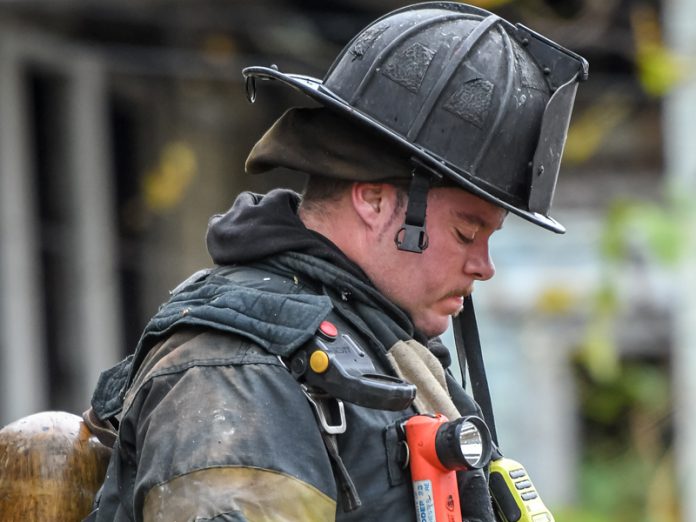Who Will Save Us? A three-part investigative report.
Video Introduction: Sounding The Alarm
Part 1: The Volunteer Firefighter Drain
One volunteer’s weekend illustrates the intense pressure, immense time and constant personal sacrifice required to serve.
Part 2: Free Isn’t Without A Hefty Price
Volunteers grapple with funding and consolidation while sitting on tens of millions of dollars in duplicated equipment.
Part 3: We Pay Police & EMS – Why Not Firefighters?
A look at what can be done to substantively address the problems facing local fire departments.
Consider Mike Mamone III’s spot on a hot July evening.
It was the day he’d been begging his exhausted wife to hold out for. He’d drained his two-week paternity leave and she’d been home alone and up nights for a week with a screaming, very colicky three-week-old baby girl and a rambunctious 6-year-old all-boy kind of boy.
Just hold on till Friday, he told Carly, 31, and I’ll do the nighttime and you can sleep.
But as has happened countless times for the Rochester volunteer fire chief, Mamone wouldn’t keep his promise.
He averages nearly 200 broken promises a year – about half the department’s total average calls – in putting his volunteer service before his loved ones.
But when the fire alarms blare, Mamone and a shockingly diminished number of volunteer firefighters across the county and state know there may be no fallback and people could die. They’re no longer protecting only their home communities. They’re just as regularly called to protect neighbors near and far to make up needed manpower.
The situation is dire and response times have significantly increased, according to state and local officials. In the ‘70s, Pennsylvania had more than 300,000 volunteers; numbers now have crept into the mid 30,000s.
Decades of studies and legislation thus far haven’t stemmed the deepening crisis, officials said. In fact, Mamone’s department continues to lose members like a leaking hose.

